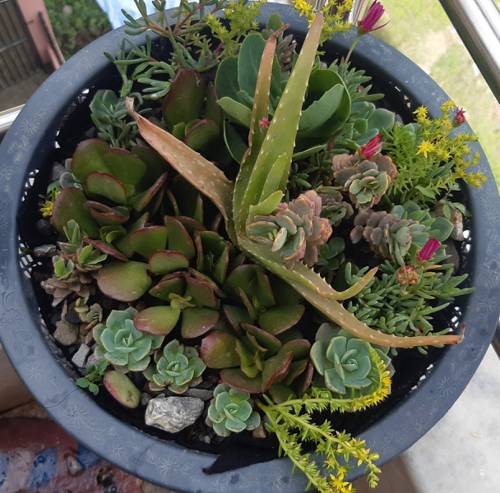
FAQ About Indoor Plant Growth Retardant Management

What are indoor plant growth retardants?
Indoor plant growth retardants are substances used to slow the growth of plants. These can be chemical or natural substances applied to plants to control their size and shape. Growth retardants are particularly useful for maintaining the aesthetics and manageability of indoor plants by preventing them from becoming too large or unmanageable within a constrained indoor space.

Why would someone want to use growth retardants on indoor plants?
Growth retardants are used on indoor plants to maintain their size and shape, ensuring they fit well within indoor spaces without requiring frequent trimming. They can also help in creating aesthetically pleasing displays, conserving resources, and reducing the labor involved in maintaining indoor plant arrangements.

Are plant growth retardants safe for all types of indoor plants?
Not all plant growth retardants are safe for all types of indoor plants. The safety and effectiveness of a growth retardant depend on the specific plant species, the concentration used, and the application method. It is crucial to follow the product instructions carefully and conduct a patch test, if possible, to avoid any adverse effects on the plants.

How do chemical growth retardants work?
Chemical growth retardants work by inhibiting the plant hormones that stimulate growth, particularly the hormone gibberellin. By suppressing gibberellin, these substances slow down the rate of cell division and elongation, ultimately leading to controlled plant growth and reduced plant size.

Can I use natural methods to control indoor plant growth instead of chemicals?
Yes, there are natural methods to control indoor plant growth. These include adjusting light and temperature conditions, root pruning, and selective trimming. Additionally, choosing plants naturally suited to your indoor environment can help manage growth without the need for chemical retardants.

What is the best way to apply growth retardants to indoor plants?
The application method for growth retardants depends on the specific product. Typically, growth retardants are applied as a foliar spray or soil drench. It's important to follow the manufacturer's guidelines to ensure safe and effective application. Always wear protective gear when handling chemicals and apply them in a well-ventilated area.

Are there any risks associated with using chemical growth retardants indoors?
Yes, there are potential risks. Chemical growth retardants can pose health risks to humans and pets if not handled properly. They can also cause harm to plants if used incorrectly. It is important to follow safety instructions, use appropriate personal protective equipment, and apply them as directed to minimize risks.

How often should growth retardants be applied to indoor plants?
The frequency of application varies depending on the plant species, the growth condition, and the specific growth retardant product used. Generally, growth retardants may need to be reapplied every few weeks to months. Always refer to the product label for specific guidelines and adjust as needed based on plant response.

Can growth retardants affect the blooming of indoor plants?
Yes, growth retardants can affect the blooming process of indoor plants. They may delay flowering or reduce the number of blooms, depending on the plant species and the dosage applied. It's essential to consider these factors when planning the use of growth retardants on flowering plants.

What are some signs that an indoor plant may need growth retardants?
Signs that an indoor plant may benefit from growth retardants include excessively rapid growth, outgrowing its space, frequent need for pruning, and becoming unruly or difficult to manage. Assess the plant's environment and growth patterns to determine if growth retardants are suitable.

Are there common alternatives to growth retardants for controlling plant size indoors?
Yes, there are several alternatives to using growth retardants. These include regular pruning, choosing smaller or slow-growing plant varieties, adjusting environmental conditions like lighting and temperature, and selectively pairing plant types to naturally constrain each other's growth.

What precautions should I take when using growth retardants on edible indoor plants?
When using growth retardants on edible indoor plants, it's crucial to select products that are approved for use on edible crops, follow the instructions carefully, and adhere to recommended waiting periods before consumption. Consider consulting horticultural experts if unsure about safety.

Are there environmentally friendly growth retardants available?
Yes, there are environmentally friendly plant growth retardants on the market. These products often use natural or organic ingredients and are designed to minimize environmental impact. It's important to research and choose products that are labeled as eco-friendly or organic certified.

What are the advantages of using growth retardants over regular pruning?
Using growth retardants can be less labor-intensive compared to regular pruning, as it reduces the frequency and extent of trimming needed. It provides a more consistent and uniform shape to plants and can be ideal for managing multiple plants or large indoor gardens with limited time.

How can light conditions influence the need for growth retardants in indoor plants?
Light conditions play a crucial role in plant growth. Insufficient light can lead to leggy, elongated growth, while too much light may promote rapid growth. By optimizing light levels, you can often manage plant size better without relying heavily on growth retardants.

What are the long-term effects of using growth retardants on indoor plants?
Long-term use of growth retardants can lead to stunted growth, reduced flower and fruit production, and potential build-up of residues in plant tissues. It's essential to use these products judiciously and monitor plant health regularly to mitigate negative effects.

Can growth retardants be used on young or newly potted indoor plants?
It is generally recommended to avoid using growth retardants on young or newly potted indoor plants, as they are still in a crucial establishment phase. Allow plants to acclimate and establish themselves before considering growth retardants for size control.

How can I ensure that the use of growth retardants does not impact indoor air quality?
To prevent negative impacts on indoor air quality when using growth retardants, ensure proper ventilation during application, use eco-friendly products when possible, and follow all safety precautions. It's also advisable to re-enter treated areas only after recommended periods.

What should I do if I accidentally over-apply growth retardants to an indoor plant?
If too much growth retardant is applied, immediately remove excess by washing the leaves with clean water and improving soil drainage, if possible. Monitor the plant closely for any adverse effects such as wilting or discoloration and adjust care to support recovery.

Can growth retardants be combined with fertilizers for better plant management?
Growth retardants can be used alongside fertilizers to manage plant growth and nutrition effectively. However, the timing and type of fertilizer used should complement the growth retardant's action, ensuring they support overall plant health without encouraging excessive growth.
